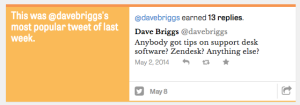Bluesky is definitely feeling like the nicest Twitter/X replacement going. But it’s a long way from perfect.
The community feels compact, small but friendly. There’s a sense that people want to be there, and that it isn’t a chore (Mastodon sometimes just feels like hard work). It’s chatty, and whimsical, which is just how early Twitter felt.
It definitely needs more users. Hopefully the invites are dropping regularly enough to keep the flow up.
The main issue for me is that the web interface is really clunky. It’s ludicrously hard to actually clear notifications, so often it looks like there’s something new happening, when there isn’t. I find myself refreshing the browser a lot, which shouldn’t be necessary really.
The app on iOS suffers in the same sort of ways.
There’s also a bit of distraction with Bluesky – all the stuff about servers and things. I guess that important to people who think federation is important, but I suspect those people are limited in number. Most folk just want a usable, stable, Twitter-like experience that isn’t full of horrible behaviour.
Dave Winer would like to see Markdown style editing. Am not totally convinced of that, as I like the plain text approach, and I guess you can still use markup, only the reader has to use their imagination 😆
One thing it lacks, which actually I don’t care about too much, is private direct messages. Twitter/X has those, of course. Sometimes they are useful to drop someone a note to say you’d like to talk to them about something. Maybe though, it would be better to just let people feature their email addresses or other ways to contact them on their profiles. After all, nobody needs yet another place to check for these things.
What they definitely shouldn’t do is copy the way Mastodon does private messaging, which is a proper dog’s dinner. ‘Private mentions’ are almost indistinguishable from public ones, and it terrifies me!



